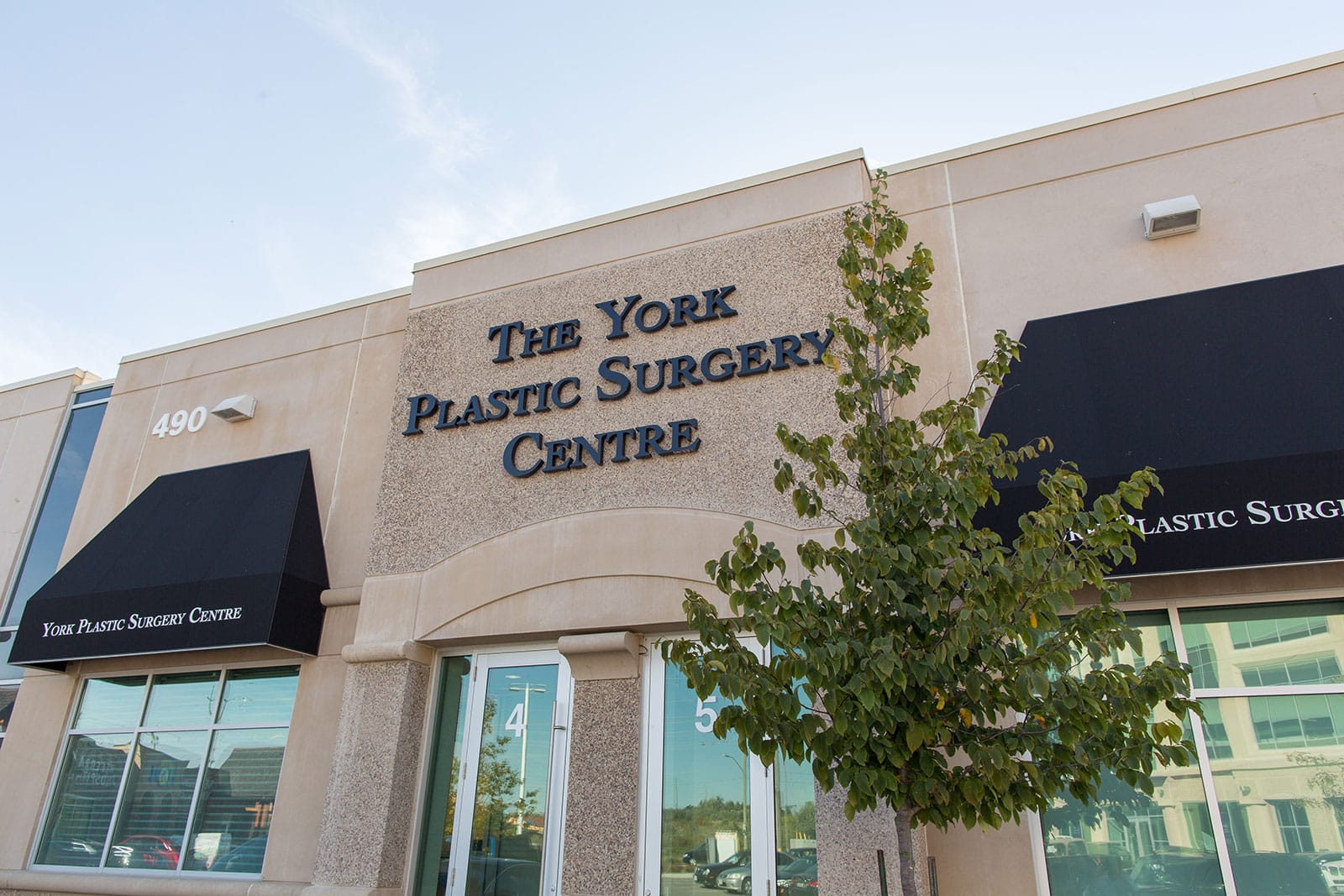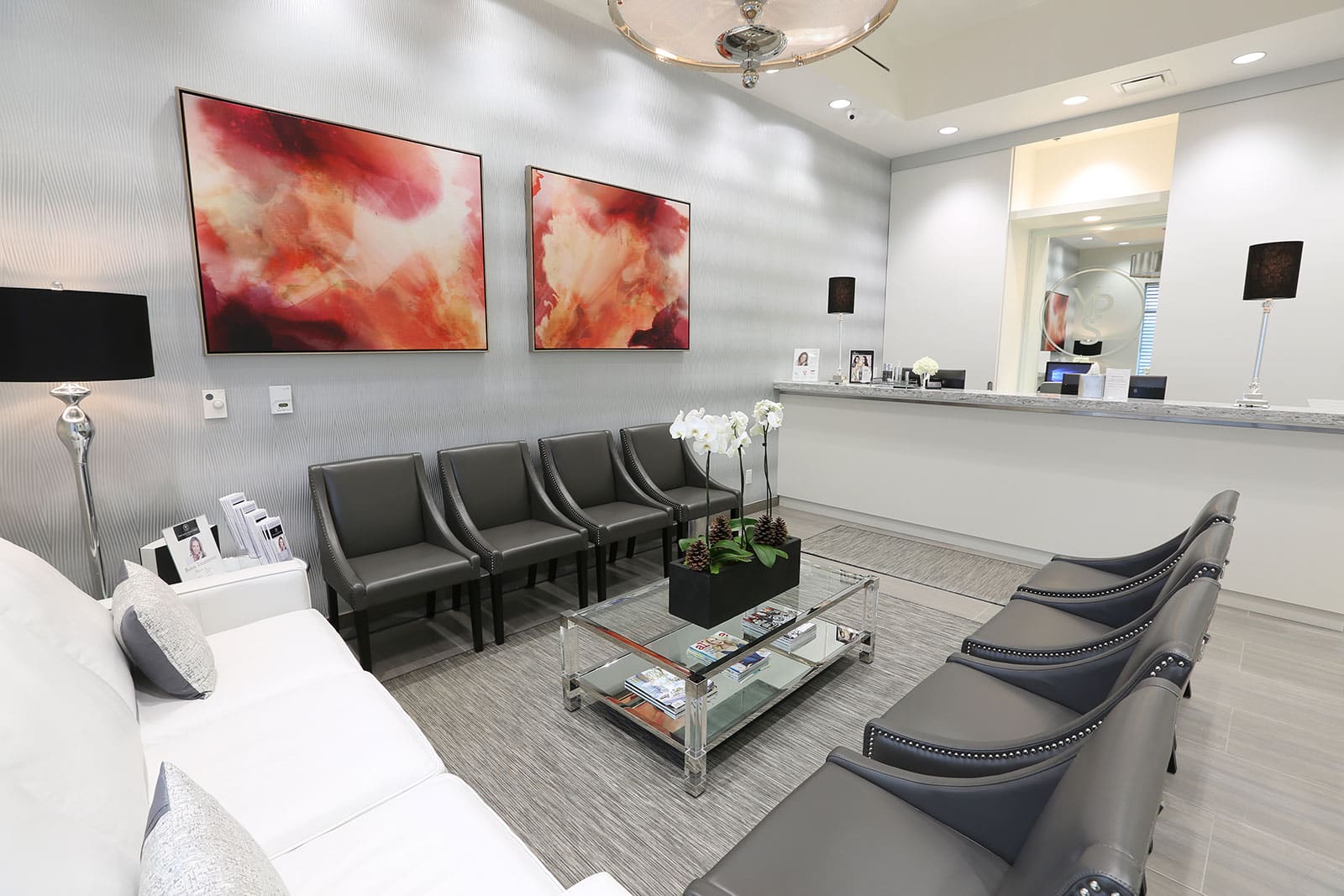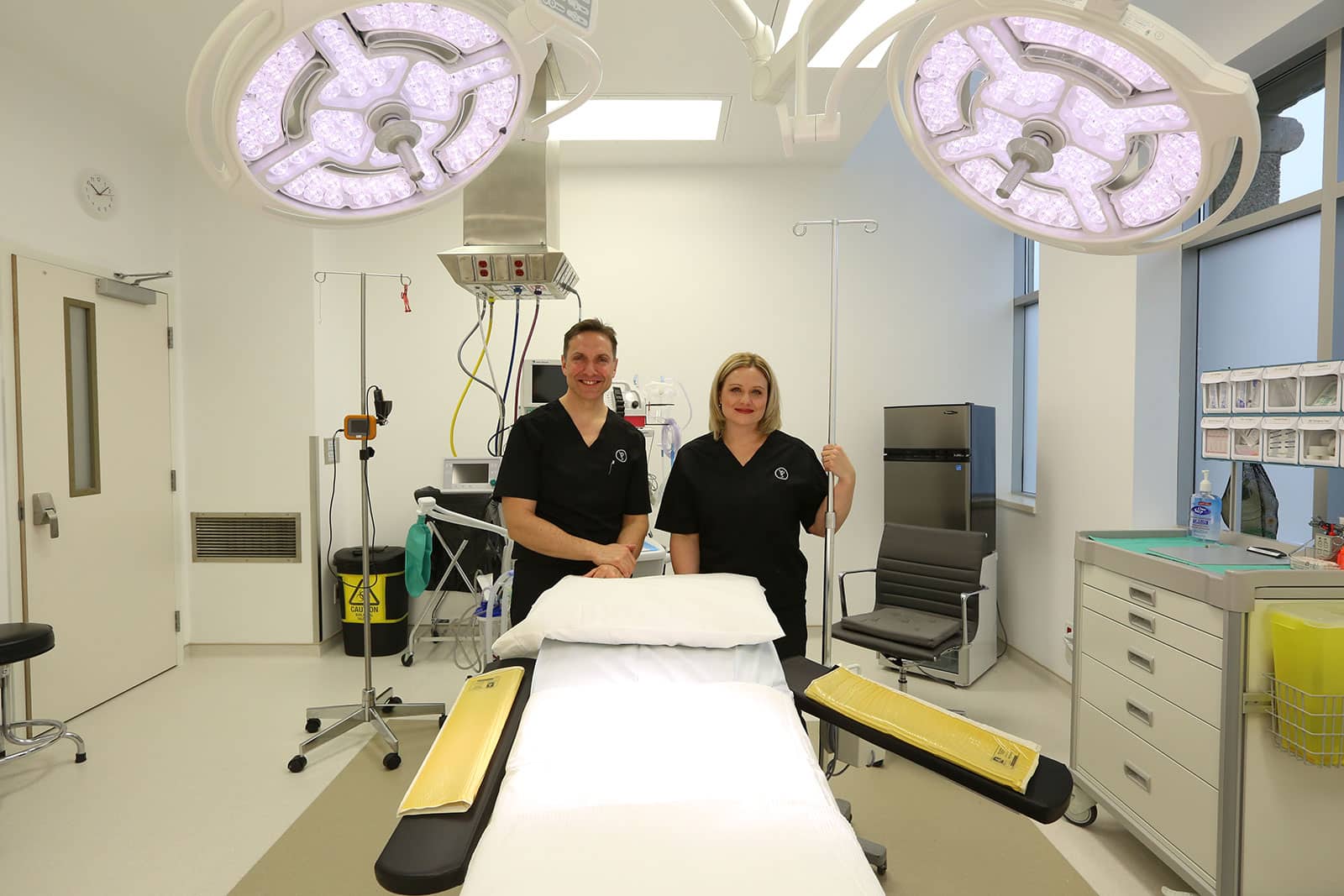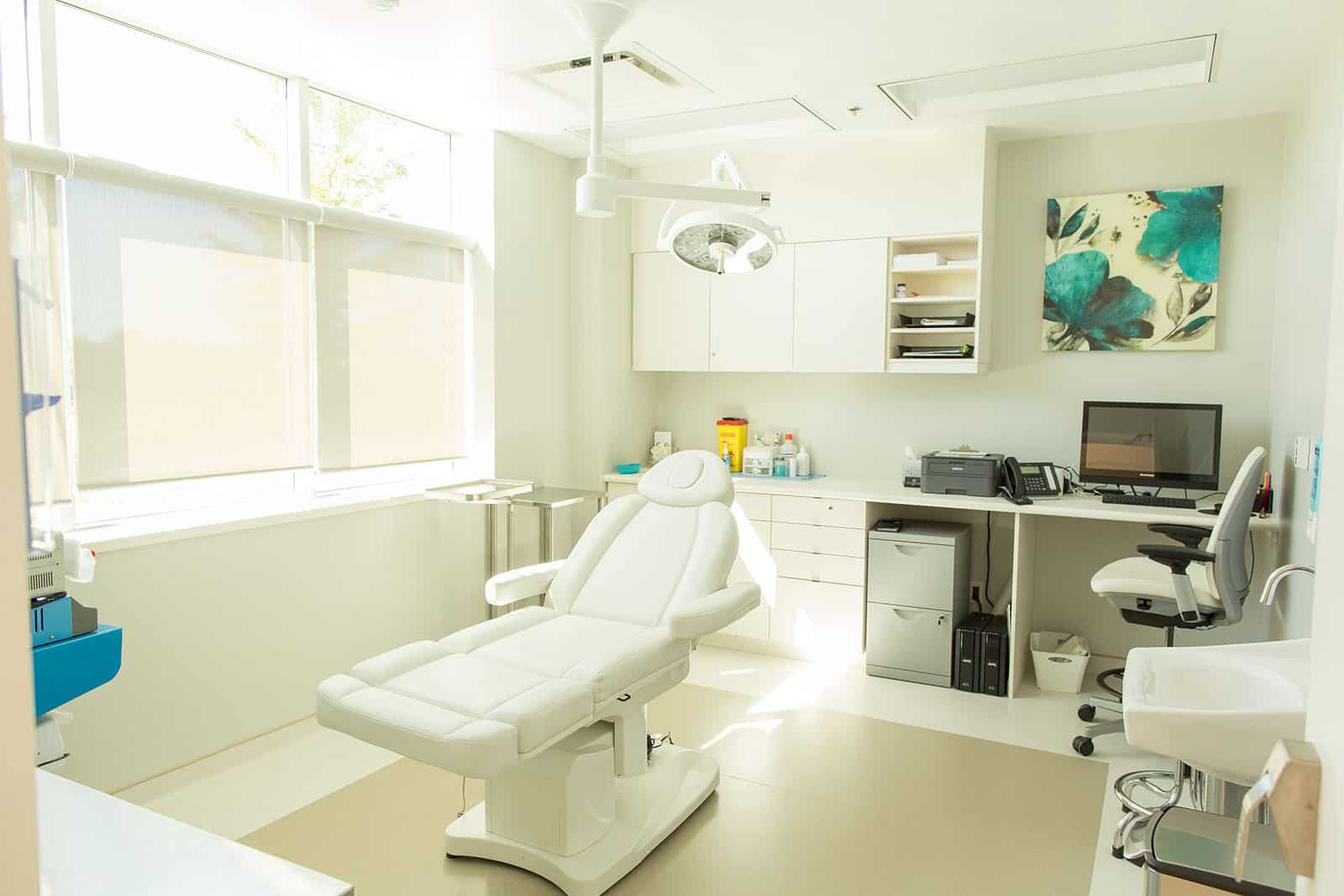Breast Implants + Lift
Augmentation-mastopexy surgery refers to inserting breast implants and performing a breast lift (mastopexy) during the same operation. Most people seeking this operation have decreased upper breast fullness, and nipples that are sagging and low on the breasts. Some breasts develop this way and always have this appearance (such as tuberous breasts), but other people develop this problem after having children, after major weight loss, or as part of natural age-related changes.
Inserting a breast implant improves the overall breast shape and enhances upper breast fullness, and a lift elevates the nipple and tightens the skin. There are many ways to perform a breast lift operation; please refer to the section on Breast Lift surgery for more details. The type of breast lift recommended by Dr. Andrade will vary depending on each person’s anatomy.
When considering whether augmentation-mastopexy would be a good option, it helps to understand how plastic surgeons classify breast sagging, or ptosis (pronounced “tow-sis”). There are several different classifications but a commonly-used system is as follows:
- Grade 1 ptosis (Mild) – the nipple appears a little low on the breast but it is still above the inframammary fold (IMF). The IMF is the crease under the breast, where the lower breast meets the chest. If you put a ruler or other straight object under your breast and look in a mirror, you will be able to tell where your nipple sits relative to your IMF.
- Grade 2 ptosis (Moderate) – the nipple is lower than the IMF but not on the lowest part of the breast.
- Grade 3 ptosis (Severe) – the nipple is at the lowest part of the breast, pointing to the floor.
- Pseudoptosis – the nipple is located above the IMF but the appears to be excess tissue on the lower part of the breast, giving a heavy, sagging look to the breast even though the nipple is not too low.
Most women who have Grade 1 ptosis will find that breast implants alone will provide a good result, and lift will not be necessary. In cases of Grade 2 ptosis, a lift may or may not be required, depending on the patient’s goals and expectations. Some people would rather have implants alone rather than the scars associated with a breast lift even if the nipple is not perfectly located on the breast mound. Others would prefer to have the improved shape and skin tightness that a mastopexy achieves. Dr. Andrade also takes into consideration other factors such as skin elasticity and amount of breast tissue when advising patients about their options. The majority of clients with Grade 3 ptosis will choose to have an augmentation-mastopexy because breast implants alone usually will not significantly improve the position of the nipple. In this situation the implant will often look high on the chest, and the nipple will still be at the bottom of the breast. However, some people with stage III ptosis will still choose to have implants alone at the first stage, then decide if they want to have a breast lift in the future.
Choosing breast implants:
When having augmentation-mastopexy surgery in Canada it is possible to have regular saline-filled or silicone gel-filled implants. All of these implants have an outer shell made of silicone. Some of the advantages of saline implants include lower cost, the ability to adjust the implant volume in the operating room, and insertion of the implant through a slightly smaller incision. However, disadvantages include a higher implant rupture rate and possibly a higher chance of seeing or feeling ripples in the shell of the implant (note: Ideal brand implants have a lower rupture rate than many other implant brands). Advantages of silicone implants include a softer feel and decreased tendency to cause rippling. They also have a lower rupture rate than typical saline-filled implants. All silicone implants in Canada are filled with thick cohesive gel (that has the consistency of a “gummy bear”) so if they rupture the silicone is not likely to flow elsewhere. Some disadvantages include increased cost, possibly higher contracture rate, and a slightly longer incision on the breast. Dr. Andrade usually inserts round rather than teardrop-shaped implants for people seeking augmentation-mastopexy surgery because the round implants provide good upper breast fullness, they are less expensive, and unlike teardrop implants they can not rotate into the incorrect position. During implants plus lift surgery, Dr. Andrade always inserts the implants in a submuscular pocket because there is better tissue coverage of the implants, and more of the blood supply to the breast is maintained.
Preoperative Preparation:
Prior to any surgical procedure, a general physical examination by a family physician is recommended. Dr. Andrade is pleased to send a consultation letter to the family physician if the patient wishes to keep them informed of their operation. For healthy patients routine preoperative bloodwork or other tests are are not usually required prior to surgery (as per the recommendation of Choosing Wisely Canada). It is very important to inform Dr. Andrade about all medications, vitamins, and herbal supplements. Some of these substances can increase the risk of bleeding and must be stopped prior to surgery. Do not have anything to eat 8 hours before surgery. Only clear fluids may be consumed up to 3 hours before surgery such as water, apple juice, coffee without milk, or soda. No soups, milk, orange juice or other cloudy fluids can be consumed. A special surgical bra will be provided. Dr. Andrade and a registered nurse will review all of these details prior to the operation.
Day of Surgery:
Breast implants plus lift surgery is performed under a general anesthetic, either in Dr. Andrade’s private facility (The York Plastic Surgery Centre), or at Southlake Regional Health Centre. The anesthetic is delivered by a FRCSC-trained anesthetist, and all nursing staff have appropriate OR credentials. The operation takes about 3 hours but total time spent in the facility is approximately 4-5 hours. Family members are welcome to stay in the comfortable waiting area, but the majority of people choose to leave and come back later.
Postoperative Recovery:
Clients are given a prescription for pain medications and a stool softener. Most people are doing their own self-care and other their light activities the day after surgery, but Dr. Andrade recommends patients avoid heavy lifting or vigorous excercise involving the chest muscles for 4-6 weeks following surgery. Most people will take 1-2 weeks off work, but some people will work from home or return on light duties is appropriate. There is usually bruising and the breasts will be quite firm for at least several weeks following surgery. The breasts will soften and the implants may settle for several months following surgery. Scars take at least 12-18 months to completely mature and soften.
Benefits and Risks of Surgery:
The majority of patients are satisfied with the size and shape of their breasts following augmentation-mastopexy surgery, and the results will generally last for years. Potential problems immediately following surgery include but are not limited to bleeding, infection, wound healing problems, implant malposition, chronic pain, nipple breakdown (necrosis) or numbness. These problems are all uncommon. Long-term problems include implant rupture, formation of scarlike tissue around the implant (capsular contracture), implant rippling, visible or symptomatic scars called keloids, and the need for additional surgery. Rarely, life-threatening complications can arise during or after any operation. Breast implants can affect mammogram screening and there is a very low yet increased risk of developing a rare form of lymphoma called anaplastic large cell lymphoma (ALCL). The US Food and Drug Administration (FDA) states that at the present time there is not sufficient evidence to show an association between silicone breast implants and rheumatoid arthritis or other connective tissue diseases. However, some studies have indicated that there could be a potential link. Dr. Andrade will discuss other specific risks and answer any questions during the consultation. This information is intended to complement the advice of a plastic surgeon obtained during a proper consultation, and it is by no means exhaustive or complete.
Common Questions About Augmentatation-Mastopexy Surgery
Will my breast implants need to be replaced in the future?
Like any prosthetic device, breast implants may need to be replaced at some point so they should not be considered lifetime devices. Reasons for requiring implant replacement include implant rupture or deflation, implant shifting, or capsular contracture. Other patients simply wish to have different-sized implants, or to have them removed for personal reasons.
What is the difference between a breast lift and a breast implant?
Breast lift surgery (mastopexy) reshapes the existing breast tissue and improves the position of the nipple on the breast mound. Patients who choose breast lift surgery are satisfied with the current size of their breasts but want to improve the shape and nipple position. Breast implant surgery increases the size of the breast. Patients who choose breast implant surgery wish to have a larger breast size. Some patients want to improve the shape and increase the size, in which case a combined implant + lift operation can be performed (augmentation-mastopexy).
If I decide to have breast augmentation plus lift, how long will I have to wait for the operation?
The timing of surgery varies but often it is possible to have surgery within 2-6 weeks of booking the procedure.
How much time will I need off work?
Dr. Andrade recommends taking about 1-2 weeks off work for patients with employment not involving heavy lifting. Some people return to work earlier if they are feeling well and recovering particularly quickly. Those with more strenuous jobs, particularly involving heavy lifting or pushing, may require 3-4 weeks or more of light duties before returning to their regular work duties. Do not drive a car, operate machinery or go to work if you are taking narcotic pain medications.
How long will it take to see the final result?
Shortly after surgery it is common to have some puckering along the incisions caused by the hidden sutures in the skin, and abnormal breast contour due to extensive remodelling of the breast tissue. These issues generally resolve within several months. Scars start to soften and fade within a few months of surgery, and they will continue to improve for at least 12-18 months. Dr. Andrade will provide scar treatments (silicone gel or sheets) to help fade the scars.
Are drains necessary for augmentation-mastopexy surgery?
Dr. Andrade does not use drains for the vast majority of his patients having augmentation-mastopexy surgery, because he has not observed a benefit in his practice. Bleeding during this operation is usually minimal. For more extensive procedures or if there is more oozing than usual, drains might be used and removed within several days at the clinic.
Breast Augmentation
MODERN PRIVATE SURGICAL FACILITY
"Yorkville of the North"™
Conveniently located off highway 404 in Newmarket Ontario, The York Plastic Surgery Centre is a cosmetic surgical to facility that meets CPSO regulatory standards of safety, technology and patient care. Dr. Andrade is a trusted member of the healthcare community. Also, all of the medical staff that work at the facility include board certified anaesthesiologists and fully credentialed OR nurses.
Operations performed at the facility are done on an out-patient basis with in home nursing care as needed. Patients requiring more complex surgeries stay overnight at the hospital.
The entire staff at The York Plastic Surgery Centre work hard to make every patient feel welcome, comfortable and well informed.
Disclaimer: Images and videos on this page are models. See Dr. Andrade's photo gallery for hundreds of actual patient outcomes. It is not possible to guarantee a specific result because outcomes vary from patient to patient.







